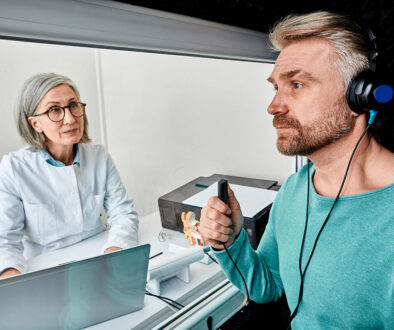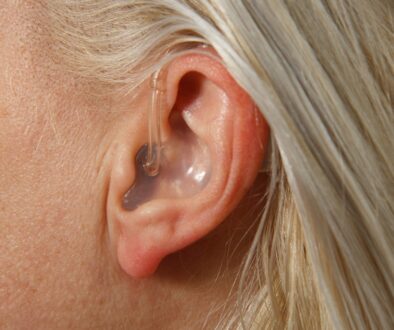Difficulty Hearing? Eustachian Tube Dysfunction May Be to Blame
When someone speaks to you, do you have difficulty understanding them because the sound is muffled? Perhaps this is accompanied by a pain in your ear. You may be surprised to learn that the problem may not be with the ear itself, but with the eustachian tube.
Maybe you’ve never heard of the eustachian tube, but it can have a dramatic effect on your ENT health. When it can’t function properly, it creates extensive problems that can lead to inner ear damage if not corrected in a timely manner.
We’ll take a closer look at what eustachian tube dysfunction is, its symptoms and the revolutionary procedure we offer specifically tailored to treat it.
But first, to understand how the dysfunction affects you, it first helps to have an overall understanding of the anatomy involved and the eustachian tube’s role in your everyday life.
What Is the Eustachian Tube?
This narrow tube links the back of your nose to your middle ear. Typically, the tube is closed. However, it does open whenever you yawn, chew or swallow.
Its purpose is not only to provide ventilation and drainage to the middle ear, but to also protect it from pathogens that could cause infections. In addition, the eustachian tube also helps equalize pressure around the eardrum so that it can freely vibrate.
What Is Eustachian Tube Dysfunction?
Whenever something prevents the tube from doing its job, you can have eustachian tube dysfunction. The most common causes are obstruction or patulous (meaning the tube stays open when it should be closed).
What Are The Symptoms of Eustachian Tube Dysfunction?
Symptoms of eustachian tube dysfunction include:
- A sense of fullness in your ear
- Difficulty hearing
- Pain
- Experiencing muffled sounds
- Tinnitus
If not treated, this dysfunction can lead to:
- Otitis media (an ear infection)
- Damage to the middle ear and/or eardrum
- Eardrum perforation
- Cholesteatoma, which is a collection of skin cells inside your ear
- While this condition is rare, it can damage the delicate structure of your middle and inner ear.
- The collapse of the eardrum into the middle ear
How Is Eustachian Tube Dysfunction Treated?
There are several options for eustachian tube dysfunction treatment, and we will help you determine which is right for you. Nasal sprays and antihistamine tablets can offer some relief. In addition, it sometimes helps to have drainage tubes placed in your ears to help equalize middle ear pressure.
But for those with chronically blocked eustachian tubes, this may provide only temporary relief. Now, a simple, ten-minute procedure offers a solution.
At Raleigh Capitol ENT, we now offer eustachian tube balloon dilation. We utilize this technique through the FDA-approved Aera system. During this procedure, a small balloon is gently inserted into the eustachian tube through the nose. Then, the balloon is inflated, opening up a pathway to restore the tube to its level of normal functioning. The balloon is removed after the pathway has been opened.
What Is the Success Rate for Balloon Dilation?
Followup periods from three to 12 months indicate success rates as high as 92.3 percent. However, results may vary depending upon your individual situation and the extent of the dysfunction.
Does Insurance Cover Eustachian Tube Balloon Dilation?
This depends upon your individual policy. There is a lot of variation about what is covered and how much is covered, so we recommend talking to your insurance company representative.
How Long Does Eustachian Tube Balloon Dilation Last?
On average, the dilation is still working two years after the procedure. Again, these results may vary based upon your individual situation.
Is Eustachian Tube Dilation Painful?
Although you might feel some mild discomfort, the procedure should not be painful.
Patients may also have local or general anesthesia. The type of anesthesia used is decided on a case-by-case basis, factoring in patient preference, anatomy and if there is a need for additional procedures.
Remember, if you have had general anesthesia, you should not drive for two days following the procedure. In addition, you should take one day off from work after the balloon dilation.
Raleigh Capitol ENT: Utilizing the Latest Medical Technology with Compassionate Care
As ear, nose and throat doctors in Raleigh and the surrounding areas, we take our commitment to your health seriously. That’s why we’re always looking for new treatments that provide greater relief from ear, nose and throat conditions.
Our board-certified otolaryngologists in Raleigh are leaders in their field, and their extensive experience means they will always be able to tailor an appropriate treatment plan specifically designed for your individual situation.
Scheduling an appointment with us is quick and easy. Simply contact us today to get started.




